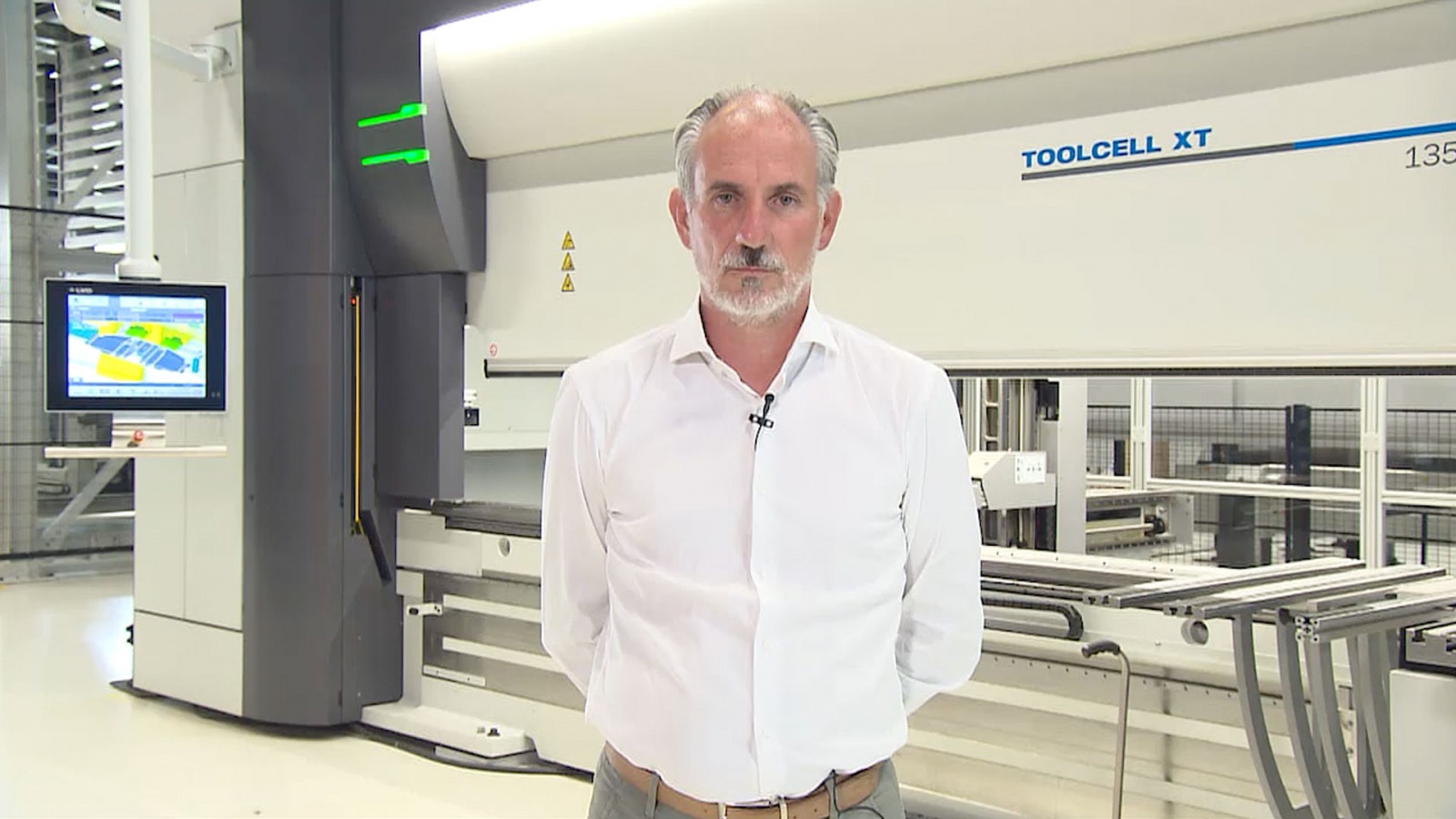Skip the introduction video.
Discover how ToolCell reduces “Art to Part” times by up to 84%
With 75% of the bending batches involving no more than 30 parts to be produced, a lot of time in sheet metal workshops is being wasted on non-productive machine changeovers. The problem becomes even more pressing due to the increasing complexity of metal parts and assemblies, requiring multiple tools to be used in specific sequences and multiple setups to be arranged for one batch. But what if smart automation would allow you to dramatically speed up setup times and increase throughput?
Easy and fast changing of tools from one part or batch to another
That’s exactly what LVD’s ToolCell family of press brakes accomplish. ToolCell machines are fully-equipped press brakes with integrated automatic tool changers and a tool warehouse inside the machine holding two rows of punches and five rows of dies. This arrangement allows for easy and fast changing of tools from one part or one batch to another. ToolCell also features as standard LVD’s market leading adaptive bending system Easy-Form® for in-process angle measurement and correction.
All ToolCell machines come with our intuitive CADMAN® software, in which you can import the 3D drawing of your part or assembly to easily create the necessary collision-free bending sequences, as well as the automatic tool setups that are needed. Operators don’t lose time exchanging tools and can better concentrate on the value-adding activities such as the bending and the related material handling and sorting.
ToolCell automated tool changing Press Brake reduces “Art to Part” times by up to 84%
Let's have a look at today's bending challenges. We all have the same problem because we all have small batches, complex parts, short lead times and narrow margins. So let's take a closer look. What does it mean for us? On the subject of small batches, we get feedback from our customers telling us they no longer bend thousands of parts.
Instead, they bend small batches. More specifically, we learned that 75% of their jobs involve batches of up to 30 parts, with just 5% involving 100+ parts. So if you only do 30 parts you are frequently changing your machine setup. Secondly, it’s true we no longer make simple parts. You don’t buy a ToolCell to bend L profiles or U profiles.
You bend complex parts in multiple setups. This means setup must be perfect every time. Plus, we make assemblies. Several parts must go together. You all work with automatic welding machines, which require correct parts.
Our ToolCell will give you correct parts for your assemblies and your welding machines. And then, of course, we all have short lead times. We have several parts to bend, we have multiple operators, multiple machines and it’s all very complex so we need excellent job scheduling.
We need a job organising system that lets us use the full range of possibilities of the machine and that maximises productivity across our machine park.
We also have narrow margins. I don't need to explain because we all know that narrow margins are par for the course. So with narrow margins you obviously want maximum productivity.
Let's see how we can reduce our setup time and maximise throughput. This involves several elements. Our setup time is the most time-consuming aspect of press brake operation. Again, we learned from our customers that setup time is usually between 8 and 15 minutes, during which time the machine sits idle as your operator is looking for the correct tools, looking for the job and for the sheets to bend. However, those 8 to 15 minutes mean a loss of production and that is why we want to get away from manual operation because manual operation depends on the operator.
Our goal is to optimise operation as much as possible. Automated operation gives us the possibility to use offline programming. Offline programming, the CADMAN-B software, handles a 3D part and that signals the start of our machine programming. So the software gives you the correct unfolding and the complete program, and it will send all the data to the machine.
Once on the machine, we don’t make a selection from our list. With our barcode scanner or QR code scanner, we scan our program and the correct data starts flowing in immediately. And on the machine there is no more manual clamping, it’s all automatic clamping.
We use hydraulic clamping to change punch and die. The ultimate feature is the automatic tool changer because it helps the operator increase productivity and place all the core tooling in the correct position.
So no more time loss through manual operation, meaning we can work faster and more efficiently, resulting in lower costs. The latter is extremely important because narrow margins are a key factor. So taking all of this into account, we want to deliver a consistent result on our machines, on our parts, and that requires an adaptive forming system.
An adaptive forming system is an angle measurement system that allows us to bend correctly. It measures 200 times per second and it pilots the punch depth to the correct position so that the angle is spot-on. After all, having the ultimate machine is useless if you can’t position your material correctly. The problem of material is the biggest problem involved in bending. We receive batches from our suppliers and the products in these batches are of varying thickness and gain. This means the operator has to deliver perfect parts from a mixed batch. What we are aiming for is to deliver perfect parts with a perfect angle.
Perfect for us is no more than approximately 20 minutes. So if we can guarantee this and minimise your setup time, you will benefit from maximum productivity.
Discover how ToolCell reduces your setup times to increase productivity
Watch this webinar to see how LVD’s ToolCell Press Brake uses built-in automated tool changing capability and on-board adaptive bending to dramatically shorten “Art to Part” times.













